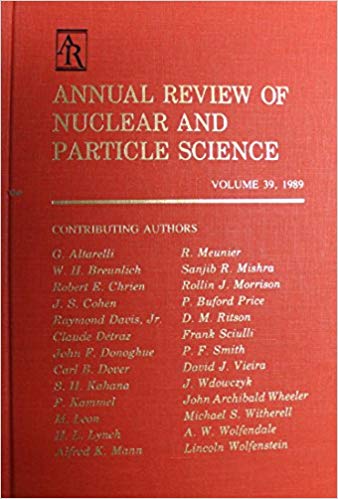从弦理论看标准模型我们学到了什么?
IF 9.1
2区 物理与天体物理
Q1 PHYSICS, NUCLEAR
Annual Review of Nuclear and Particle Science
Pub Date : 2024-06-10
DOI:10.1146/annurev-nucl-102622-012235
引用次数: 0
摘要
在标准模型之外的所有物理学候选理论中,弦理论为纳入规规和引力相互作用提供了一个独特的建议。在弦理论中,如果假设理论所预言的额外维度很小并且是卷曲的--这一概念被称为 "紧凑化"(compactification),那么就能自动获得统一量子力学和引力的四维理论。该理论的量规部门由额外维度的拓扑学和几何学规定,而我们面临的挑战是如何从这些维度再现粒子物理学标准模型的所有特征。我们回顾了从弦压缩中再现标准模型的技术现状,并总结了从这一引人入胜的探索中汲取的经验教训。我们描述了弦理论为解决一些标准模型难题所提供的新方案和机制,以及未来实验中可能探测到的新物理的最常见特征。然后,我们评论了最近的发展,这些发展以一种相当出人意料的方式将标准模型与量子引力联系起来,并可能改变我们的场论自然性概念。本文章由计算机程序翻译,如有差异,请以英文原文为准。
The Standard Model from String Theory: What Have We Learned?
Amid all candidates of physics beyond the Standard Model, string theory provides a unique proposal for incorporating gauge and gravitational interactions. In string theory, a four-dimensional theory that unifies quantum mechanics and gravity is obtained automatically if one posits that the additional dimensions predicted by the theory are small and curled up—a concept known as compactification. The gauge sector of the theory is specified by the topology and geometry of the extra dimensions, and the challenge is to reproduce all of the features of the Standard Model of particle physics from them. We review the state of the art in reproducing the Standard Model from string compactifications and summarize the lessons drawn from this fascinating quest. We describe novel scenarios and mechanisms that string theory provides to address some of the Standard Model puzzles as well as the most frequent signatures of new physics that could be detected in future experiments. We then comment on recent developments that connect, in a rather unexpected way, the Standard Model with quantum gravity and that may change our field theory notion of naturalness.
求助全文
通过发布文献求助,成功后即可免费获取论文全文。
去求助
来源期刊
CiteScore
21.50
自引率
0.80%
发文量
18
期刊介绍:
The Annual Review of Nuclear and Particle Science is a publication that has been available since 1952. It focuses on various aspects of nuclear and particle science, including both theoretical and experimental developments. The journal covers topics such as nuclear structure, heavy ion interactions, oscillations observed in solar and atmospheric neutrinos, the physics of heavy quarks, the impact of particle and nuclear physics on astroparticle physics, and recent advancements in accelerator design and instrumentation.
One significant recent change in the journal is the conversion of its current volume from gated to open access. This conversion was made possible through Annual Reviews' Subscribe to Open program. As a result, all articles published in the current volume are now freely available to the public under a CC BY license. This change allows for greater accessibility and dissemination of research in the field of nuclear and particle science.

 求助内容:
求助内容: 应助结果提醒方式:
应助结果提醒方式:


